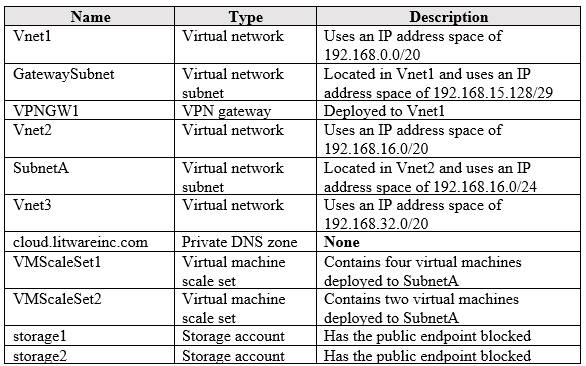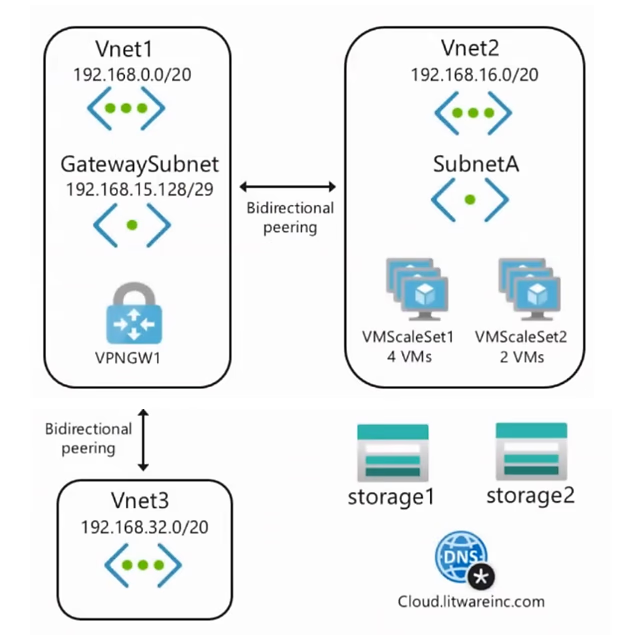Case Study -
This is a case study. Case studies are not timed separately. You can use as much exam time as you would like to complete each case. However, there may be additional case studies and sections on this exam. You must manage your time to ensure that you are able to complete all questions included on this exam in the time provided.
To answer the questions included in a case study, you will need to reference information that is provided in the case study. Case studies might contain exhibits and other resources that provide more information about the scenario that is described in the case study. Each question is independent of the other questions in this case study.
At the end of this case study, a review screen will appear. This screen allows you to review your answers and to make changes before you move to the next section of the exam. After you begin a new section, you cannot return to this section.
To start the case study -
To display the first question in this case study, click the Next button. Use the buttons in the left pane to explore the content of the case study before you answer the questions. Clicking these buttons displays information such as business requirements, existing environment, and problem statements. When you are ready to answer a question, click the Question button to return to the question.
Overview -
Litware, Inc. is a financial company that has a main datacenter in Boston and 20 branch offices across the United States. Users have Android, iOS, and Windows 10 devices.
Existing Environment -
Hybrid Environment -
The on-premises network contains an Active Directory forest named litwareinc.com that syncs to an Azure Active Directory (Azure AD) tenant named litwareinc.com by using Azure AD Connect.
All offices connect to a virtual network named Vnet1 by using a Site-to-Site VPN connection.
Azure Environment -
Litware has an Azure subscription named Sub1 that is linked to the litwareinc.com Azure AD tenant. Sub1 contains resources in the East US Azure region as shown in the following table.

A diagram of the resource in the East US Azure region is shown in the Azure Network Diagram exhibit.
There is bidirectional peering between Vnet1 and Vnet2. There is bidirectional peering between Vnet1 and Vnet3. Currently, Vnet2 and Vnet3 cannot communicate directly.
Azure Network Diagram -

Requirements -
Business Requirements -
Litware wants to minimize costs whenever possible, as long as all other requirements are met.
Virtual Networking Requirements -
Litware identifies the following virtual networking requirements:
• Direct the default route of 0.0.0.0/0 on Vnet2 and Vnet3 to the Boston datacenter over an ExpressRoute circuit.
• Ensure that the records in the cloud.litwareinc.com can be resolved from the on-premises locations.
• Automatically register the DNS names of Azure virtual machines to the cloud.litwareinc.com zone.
• Minimize the size of the subnets allocated to platform-managed services.
• Allow traffic from VMScaleSet1 to VMScaleSet2 on the TCP port 443 only.
Hybrid Networking Requirements -
Litware identifies the following hybrid networking requirements:
• Users must be able to connect to Vnet1 by using a Point-to-Site (P2S) VPN when working remotely. Connections must be authenticated by Azure AD.
• Latency of the traffic between the Boston datacenter and all the virtual networks must be minimized.
• The Boston datacenter must connect to the Azure virtual networks by using an ExpressRoute FastPath connection.
• Traffic between Vnet2 and Vnet3 must be routed through Vnet1.
PaaS Networking Requirements -
Litware identifies the following networking requirements for platform as a service (PaaS):
• The storage1 account must be accessible from all on-premises locations without exposing the public endpoint of storage1.
• The storage2 account must be accessible from Vnet2 and Vnet3 without exposing the public endpoint of storage2.
You need to connect Vnet2 and Vnet3. The solution must meet the virtual networking requirements and the business requirements.
Which two actions should you include in the solution? Each correct answer presents part of the solution.
NOTE: Each correct selection is worth one point.